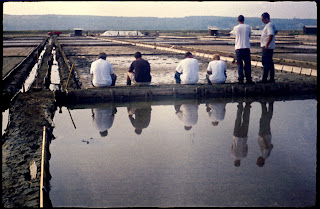Photographic subjects are very personal thing and differ
from a photographer to photographer. But are they different from, let say, a
digital photographer subjects? Yes and no, I would say. Let’s say. Now days you
will not shoot sports with analogue camera. Maybe I’m wrong but I don’t see
much sense in it. Specific for shooting sports is high “frame rate” so you can
get (catch) the perfect moment, so waste of film. This is why they invented digital
in the first place. No, an analogue photography is all opposite than sports
photography. It’s not about taking as much shots as you can get and hoping that
you get the right moment. It’s workflow is slow and deliberate. You must have
pre-visualised scene, and then you wait (if you have to) for the right moment.
But analogue photography is not about analogue vs. digital
technique or convenience, it’s all about aesthetics. Aesthetics evoke emotions,
so we can conclude that analogue photography is photography of and about
emotions. What are most common photographs which include emotion? First thought
is about portraits but we can add nature and landscape photography. Human
portrait is all about emotions of another human being and landscape or nature
is all about our emotions that we project outwards and then take a picture of
it. But, you will say, that this could be done with digital camera also. My
answer is that analogue photography has its specific look that it can be
simulated by digital workflow but it’s only that, a simulation. Every film has
its own signature, which it can be used to emphasize the emotion that we want
to catch or message to say.
But this is only my vision of (analogue) photography. You
may have (you have!) your own. Let’s take some photographs, catch some emotions
and tell a story.
Matjaž




















